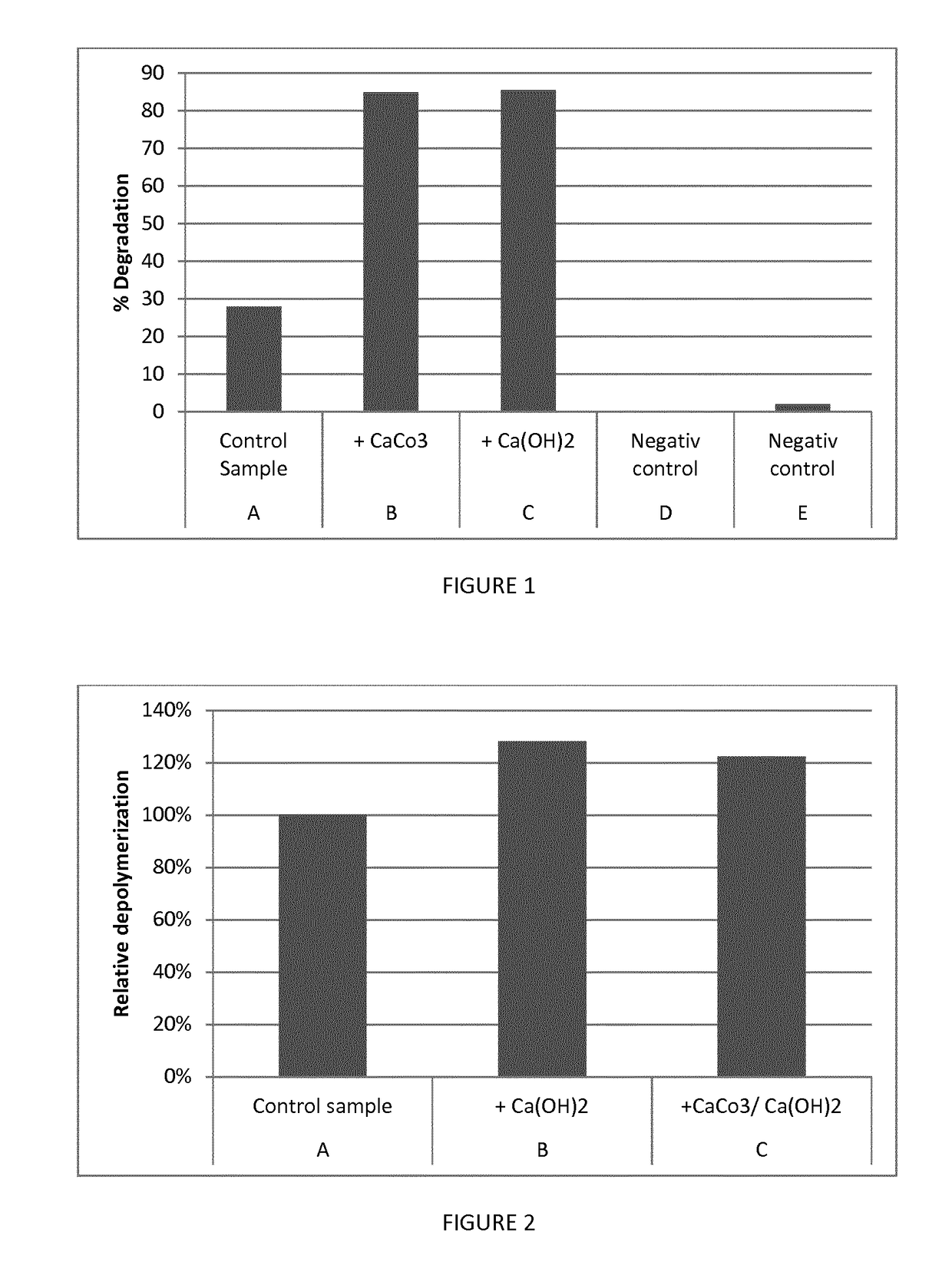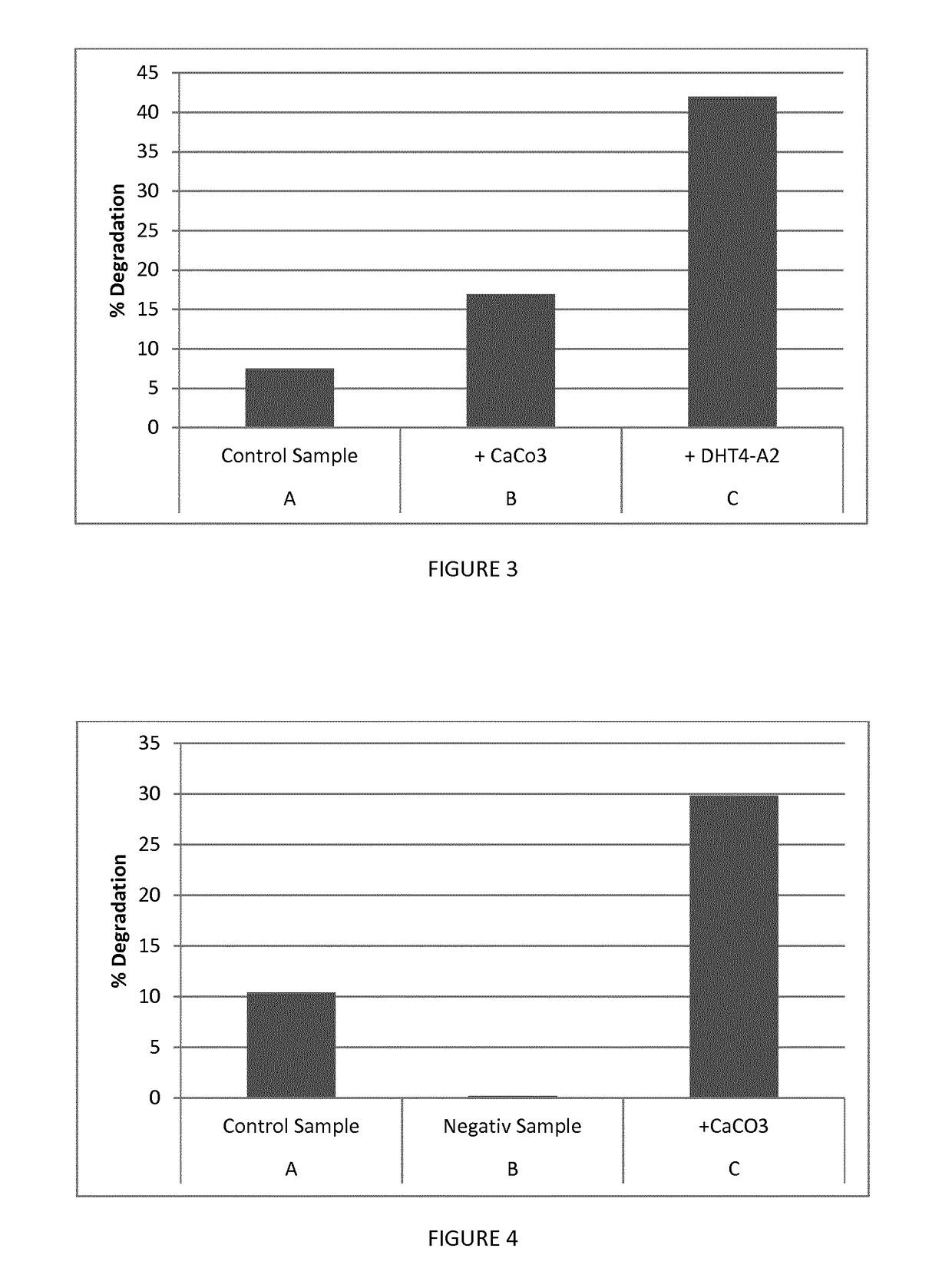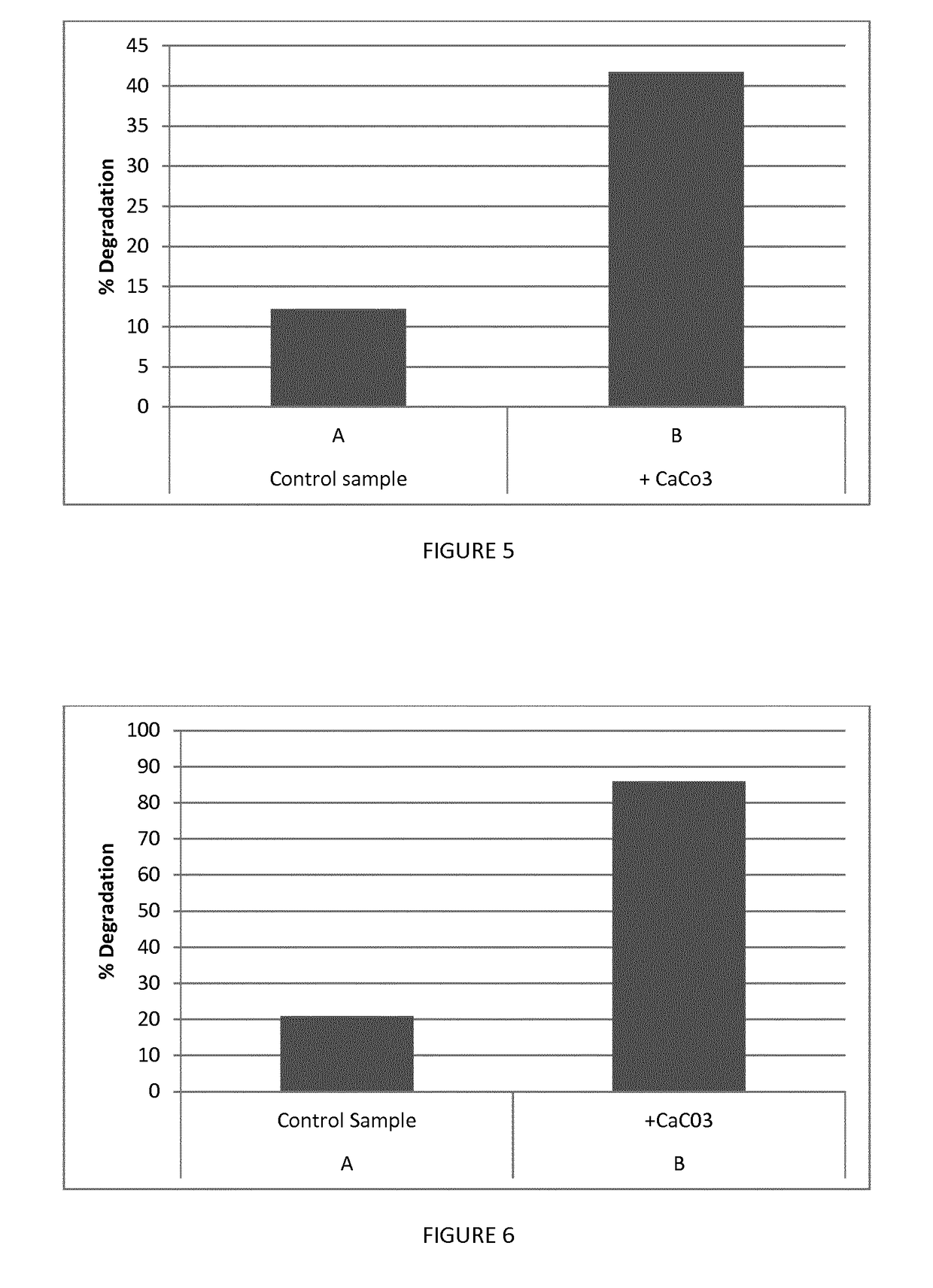Biodegradable polyester composition and uses thereof
a polyester composition and biodegradable technology, applied in the field of biodegradable polyester composition, can solve the problems of increasing environmental problems worldwide, unsatisfactory environmental degradation conditions for such biodegradable plastics, and generally partial degradation of such plastics, and achieve the effect of enhancing the polyester degrading activity of biological entities
- Summary
- Abstract
- Description
- Claims
- Application Information
AI Technical Summary
Benefits of technology
Problems solved by technology
Method used
Image
Examples
example 1
omposition Comprising Polylactic Acid (PLA), Savinase®, and Calcium Carbonate or Calcium Hydroxide as Anti-Acid Filler
[0137]1A—Process of Manufacturing the Plastic Composition Through an Extrusion Process
[0138]The formulations A-E (table 3) were prepared in order to assess the ability of Calcium carbonate (CaCO3) or Calcium hydroxide (Ca(OH)2), as anti-acid fillers, to increase the degradation of PLA compositions.
TABLE 3FormulationsProteasePLA(Savinase ®)DextrinCaCO3Ca(OH)2A95%2.5%2.5%——B95%2.5%—2.5%C95%2.5%——2.5%D95%—2.5%2.5%—E95%—2.5%—2.5%
[0139]Percentages are given by weight, based on the total weight of the formulation.
[0140]A corresponds to the control: the anti-acid filler has been replaced by a neutral dextrin;
[0141]D and E correspond to negative controls, deprived of protease.
[0142]The formulations have been prepared using:[0143]PLA (polylactic acid polymer, PLA 4043D from NatureWorks), under a powder form ([0144]Savinase® 16L from Novozymes, under solid form, that is known ...
example 2
ompositions Comprising PLA, Protease and a Mix of Anti-Acid Fillers
[0156]2A—Process of Manufacturing the Plastic Compositions Through an Extrusion Process
[0157]The following formulations A-C (table 4) were prepared in order to assess the ability of Calcium carbonate (CaCO3) alone or mixed with Calcium hydroxide (Ca(OH)2) as anti-acid fillers, to increase the degradation of PLA compositions.
TABLE 4FormulationsPLAProteaseCaCO3Ca(OH)2A90%10%——B85%10%— 5%C85%10%2.5%2.5%
[0158]Percentages are given by weight, based on the total weight of formulations.
[0159]The formulations have been prepared using[0160]PLA, calcium carbonate and calcium hydroxide in powder form as described in Example 1A,[0161]a Protease enzyme from Actinomadura keratinilytica strain under solid form. Solid form of protease from Actinomadura keratinilytica was obtained from fermentation process, followed by ultrafiltration on 3.5 kDa membrane, diafiltration, addition of dextrin and drying by atomization. Such protease is ...
example 3
ompositions Comprising PLA, Protease and Natural or Commercial Mineral Acid Filler
[0168]3A—Process of Manufacturing Plastic Compositions Through an Extrusion Process
[0169]The efficiency of both a mineral synthetic acid scavenger (DHT4-A2) and a mineral natural acid scavenger (CaCO3) has been evaluated and compared.
[0170]The following formulations A-C (Table 5) were prepared in order to assess the ability of a commercial hydrotalcite (Magnesium Aluminium Hydroxide Carbonate (DHT4-A2)), to increase the degradation of PLA compositions.
TABLE 5FormulationsPLAProteaseCaCo3DHT4-A2A95%5%——B90%5%5%—C90%5%—5%
[0171]Percentages are given by weight, based on the total weight of formulations.
[0172]The formulations have been prepared using PLA and calcium carbonate in powder form as described in Example 1A, a Protease enzyme from Actinomadura keratinilytica strain under solid form as described in Example 2A, and DHT4-A2 (from Kyowa Chemical Industry).
[0173]Based on these formulations, biodegradabl...
PUM
| Property | Measurement | Unit |
|---|---|---|
| molar ratio | aaaaa | aaaaa |
| molar ratio | aaaaa | aaaaa |
| melt flow index | aaaaa | aaaaa |
Abstract
Description
Claims
Application Information
 Login to View More
Login to View More - R&D
- Intellectual Property
- Life Sciences
- Materials
- Tech Scout
- Unparalleled Data Quality
- Higher Quality Content
- 60% Fewer Hallucinations
Browse by: Latest US Patents, China's latest patents, Technical Efficacy Thesaurus, Application Domain, Technology Topic, Popular Technical Reports.
© 2025 PatSnap. All rights reserved.Legal|Privacy policy|Modern Slavery Act Transparency Statement|Sitemap|About US| Contact US: help@patsnap.com



